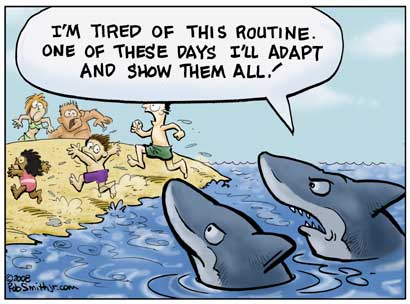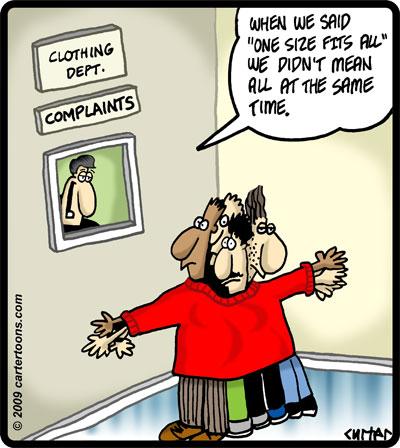Without going into the goal and the structure of warm-up in details (for some interesting insights I suggest checking the following articles by Carl Valle and Derek Hansen), I wanted to draw attention to interplay between stability and variability in it (although this discussion could be expanded to whole workout, training day, microcycle, mesocycle, season plan and longer depending on the time frame under which we are analysing this phenomena).
In short, the main purpose of the warm-up is to prepare the athletes for the main part of the workout. As late Charlie Francis used to say „Do whatever you need to warm-up“, which basically means don't follow the dogmatic hypes and limit your options by saying negative or absolute claims, like „No to static stretching“. Derek Hansen wrote excellent article on this subject which is available here. I am re posting some of my old thought from a thread at Charlie Francis forum regarding static stretching and warm-up:
1. Research is usually poorly designed... too much stretches (couple of times for 30sec or longer) and with great intensity, without 'dynamic transition': Stretch then jump
2. Warm-up routine that elites used for years is hard to change drastically and abruptly: stretching in warm up have psychological reasons as well due habits... kicking stretching out you may gain 2% in power, but lose 20% in motivation
3. Sometimes teams have poor warm-up, like jogging, stretching on the floor for 15mins and then starting with high intensity.
4. Everybody is different, also in team settings. Not that everybody need different warm-up, but they need their own time to work on the areas they feel the need to do
5. Stretching in the warm-up is more a TEST to see if everything is ok, rather than a mean to warm-up, prevent injury or increase ROM. If you feel stiff, you will make it worse with stretching. Do easy, gentle dynamic warm-up, then test the ROM and looseness with easy stretch and if ok proceed if not do more warm-up for the area.
6. "Do whatever you need to do" --- C.F.: why would you limit yourself with bunch of rules, like NO STRETCHING? I was used to be like that, but I now try to teach my athletes PRINCIPLES of good warm-up, how they need to feel and should they progress.
7. Having said this, I guess INTERMITTENT stretching is the best solution. Athlete have their own time in the team warm-up, they can test if they are loose. So basically, you do progressive dynamic warm-up with periods of easy statical stretching used to test the looseness and keep your athletes happy
Having said this I can progress to the actual topic of this article. As we have pointed out, the main purpose of the warm-up is to prepare the athletes for the main part of the workout. Someone can visualise this process as the preparation of the Formula One racing car for the race or practice. Certain check-ups need to be made and certain routine should be followed.
This is why having developed sound warm-up routines (for different types of workouts, again context dependent) which both athlete and coach trust is really important. Sometimes, having a routine is more psychological than physiological, but doesn't change it's importance since warm-up is both psychological preparation as it is physiological one, and we usually forget that.
In my opinion and with my experience working with some of elite athletes, it is important to allow athletes to develop their own routines, whose emergent should be guided by sound principles of warm-up. This is to say that we would not allow anything and everything in the warm-up for the sake of developing routine, but there should be certain compromises from what coach wants and what athlete like to do. This compromise is especially important in working with already developed and experience athletes, but not so important with younger and inexperienced athletes that need to learn good principles and warm up routines. One solution is to guide the athletes through certain exercises and warm-up principles and allow them to develop their own routine and teach them how to modify them based on their own needs, not what coach likes.
Anyway, coach will never know what bothers certain athlete and what part of his body needs further warming up. This will say that having preset warm-up routines will not allow for this individualization. This is especially evident in the team settings where athletes follow the one size fit all warm-up protocols.
Since having a certain routine both coach and athlete trust is an example of Stability, the question is how to provide Variability in the warm-up to allow for individualization and to avoid boredom.
One example is having a flexible routine, which in contrast with rigid one allows certain changes at the spot. One of the example that could be used is to allow some time for individual needs every now and then between stable warm-up routine. Take a following structure of team warm-up for example:
General Part of the warm-up
1. Jogging and joint circles (directed by coach)
2. 2 mins time allowed for individual needs (athlete choose for themselves, work more on problematic and sore areas)
3. Stretching and activation (directed by coach)
4. 2 mins time allowed for individual needs
Specific Part of the warm-up
1. Sport-specific and progressively (directed by coach)
2. 2mins time allowed for individual needs, more stretching, dynamic stretching, activation, whatever
3. Progressively entering to main part of the workout
Another example of Variability in the warm-up is to slightly change the organization of it while basically still doing the same thing. This may include the organizational solutions, like doing things in circle, lines, standing, jogging, etc.
The importance of Variability might also be seen in doing warm-up in uncontrolled environment, like warming-up outside in the rain, mud or snow compared to stable environment of the indoor facility.
Hopefully I have succeeded to draw attention to the interplay of both Stability (routines) and Variability (individualization, boredom prevention, adaptability to environmental constraints) in the warm up.







No comments:
Post a Comment